The Pop Science Core Collection is comprised of books that are about different types of science -- from nature and animals to space to environmental science and genetics -- but the text easily readable and understandable, whether you are a scientist yourself or not!

In a work that beautifully demonstrates the rewards of closely observing nature, Elisabeth Bailey shares an inspiring and intimate story of her uncommon encounter with a Neohelix albolabris —a common woodland snail.

The untold story of how poison rocked Jazz Age New York City. A pair of forensic scientists began their trailblazing chemical detective work, fighting to end an era when untraceable poisons offered an easy path to the perfect crime.

In this book Bill Bryson explores the most intriguing and consequential questions that science seeks to answer and attempts to understand everything that has transpired from the Big Bang to the rise of civilization. To that end, Bill Bryson apprenticed himself to a host of the world's most profound scientific minds, living and dead. His challenge is to take subjects like geology, chemistry, paleontology, astronomy, and particle physics and see if there isn't some way to render them comprehensible to people, like himself, made bored (or scared) stiff of science by school. His interest is not simply to discover what we know but to find out how we know it. How do we know what is in the center of the earth, thousands of miles beneath the surface? How can we know the extent and the composition of the universe, or what a black hole is? How can we know where the continents were 600 million years ago? How did anyone ever figure these things out? On his travels through space and time, Bill Bryson encounters a splendid gallery of the most fascinating, eccentric, competitive, and foolish personalities ever to ask a hard question. In their company, he undertakes a sometimes profound, sometimes funny, and always supremely clear and entertaining adventure in the realms of human knowledge.

First Published in 1962, Silent Spring alerted a large audience to the environmental and human dangers of indiscriminate use of pesticides, spurring revolutionary changes in the laws affecting our air, land, and water. "Silent Spring became a runaway bestseller, with international reverberations ... Even if she had not inspired a generation of activists, Carson would prevail as one of the greatest nature writers in American letters" (Peter Matthiessen, for Time's "100 Most Influential People of the Century"). This fortieth anniversary edition celebrates Rachel Carson's watershed book with new essays by the author and scientist Edward O. Wilson and the acclaimed biographer Linda Lear, who tells the story of Carson's courageous defense of her truths in the face of ruthless assault from the chemical industry in 1963, the year following the publication of Silent Spring and before her untimely death.

Data is fundamental to the modern world. From economic development, to healthcare, to education and public policy, we rely on numbers to allocate resources and make crucial decisions. But because so much data fails to take into account gender, because it treats men as the default and women as atypical, bias and discrimination are baked into our systems. And women pay tremendous costs for this bias, in time, money, and often with their lives. Celebrated feminist advocate Caroline Criado Perez investigates the shocking root cause of gender inequality and research in Invisible Women, diving into women's lives at home, the workplace, the public square, the doctor's office, and more. Built on hundreds of studies in the US, the UK, and around the world, and written with energy, wit, and sparkling intelligence, this is a groundbreaking, unforgettable exposé that will change the way you look at the world.

A physicist explains daily phenomena from the mundane to the magisterial. Take a look up at the stars on a clear night and you get a sense that the universe is vast and untouchable, full of mysteries beyond comprehension. But did you know that the key to unveiling the secrets of the cosmos is as close as the nearest toaster? In Storm in a Teacup, Helen Czerski provides the tools to alter the way we see everything around us by linking ordinary objects and occurrences, like popcorn popping, coffee stains, and fridge magnets, to big ideas like climate change, the energy crisis, or innovative medical testing. She guides us through the principles of gases ("Explosions in the kitchen are generally considered a bad idea. But just occasionally a small one can produce something delicious"); gravity (drop some raisins in a bottle of carbonated lemonade and watch the whoosh of bubbles and the dancing raisins at the bottom bumping into each other); size (Czerski explains the action of the water molecules that cause the crime-scene stain left by a puddle of dried coffee); and time (why it takes so long for ketchup to come out of a bottle).

An account of the five years that English naturalist Charles Darwin spent traveling around the world on the HMS Beagle, a voyage that led him to develop his theory of the evolution of the species.

Richard Dawkins forced an enormous change in the way we see ourselves and the world with the publication of The Selfish Gene. Suppose, instead of thinking about organisms using genes to reproduce themselves, as we had since Mendel's work was rediscovered, we turn it around and imagine that "our" genes build and maintain us in order to make more genes. That simple reversal seems to answer many puzzlers which had stumped scientists for years, and we haven't thought of evolution in the same way since. Drawing fascinating examples from every field of biology, he paved the way for a serious re-evaluation of evolution. He also introduced the concept of self-reproducing ideas, or memes, which (seemingly) use humans exclusively for their propagation. If we are puppets, he says, at least we can try to understand our strings.

It was Feynman's outrageous and scintillating method of teaching that earned him legendary status among students and professors of physics. From 1961 to 1963, Feynman delivered a series of lectures at the California Institute of Technology that revolutionized the teaching of physics around the world. 'Six not-so-easy pieces', taken from these famous 'Lectures on physics', represent some the most stimulating material from the series. In these classic lessons, Feynman introduces the general reader to the following topics: atoms, basic physics, energy, gravitation, quantum mechanics, and the relationship of physics to other topics.

Gawande, a practicing surgeon, addresses his profession's ultimate limitation, arguing that quality of life is the desired goal for patients and families. Gawande offers examples of freer, more socially fulfilling models for assisting the infirm and dependent elderly, and he explores the varieties of hospice care to demonstrate that a person's last weeks or months may be rich and dignified.

Fracking has vociferous critics and fervent defenders, but the debate between these camps has obscured the actual story: Fracking has become a fixture of the American landscape and the global economy. It has upended the business models of energy companies around the globe, and it has started to change geopolitics and global energy markets in profound ways. Gold tells the story of this once-obscure oilfield technology--a story with an incredible cast of tycoons and geologists, dreamers and drillers, speculators and skeptics, a story that answers a critical question of our time: Where will the energy come from to power our world--and what price will we have to pay for it?

With the insatiable curiosity and conversational prose that have made her a bestselling author, Goodall - along with Cincinnati Zoo Director Thane Maynard - shares fascinating survival stories about the American Crocodile, the California Condor, the Black-Footed Ferret, and more; all formerly endangered species and species once on the verge of extinction whose populations are now being regenerated.

From a renowned historian comes a groundbreaking narrative of humanity's creation and evolution--a #1 international bestseller--that explores the ways in which biology and history have defined us and enhanced our understanding of what it means to be "human." One hundred thousand years ago, at least six different species of humans inhabited Earth. Yet today there is only one--homo sapiens. What happened to the others? And what may happen to us? Most books about the history of humanity pursue either a historical or a biological approach, but Dr. Yuval Noah Harari breaks the mold with this highly original book that begins about 70,000 years ago with the appearance of modern cognition. From examining the role evolving humans have played in the global ecosystem to charting the rise of empires, Sapiens integrates history and science to reconsider accepted narratives, connect past developments with contemporary concerns, and examine specific events within the context of larger ideas .Dr. Harari also compels us to look ahead, because over the last few decades humans have begun to bend laws of natural selection that have governed life for the past four billion years. We are acquiring the ability to design not only the world around us, but also ourselves. Where is this leading us, and what do we want to become? Featuring 27 photographs, 6 maps, and 25 illustrations/diagrams, this provocative and insightful work is sure to spark debate and is essential reading for aficionados of Jared Diamond, James Gleick, Matt Ridley, Robert Wright, and Sharon Moalem.

In the years since its publication in 1988, Stephen Hawking's A Brief History of Time has established itself as a landmark volume in scientific writing. It has become an international publishing phenomenon, translated into forty languages and selling over nine million copies. The book was on the cutting edge of what was then known about the nature of the universe, but since that time there have been extraordinary advances in the technology of observing both the micro- and the macrocosmic worlds. These observations have confirmed many of Professor Hawking's theoretical predictions in the first edition of his book, including the recent discoveries of the Cosmic Background Explorer satellite (COBE), which probed back in time to within 300,000 years of the universe's beginning and revealed wrinkles in the fabric of space-time that he had projected.

Knowledge of the basic ideas and principles of science is fundamental to cultural literacy. But most books on science are often too obscure or too specialized to do the general reader much good. A rare exception-a science book for the general reader that is informative enough to be a popular textbook for introductory courses in high school and college, and yet well-written enough to appeal to general readers uncomfortable with scientific jargon and complicated mathematics. And now, revised and expanded for the first time in nearly two decades, it is up-to-date, so that readers can enjoy Hazen and Trefil's refreshingly accessible explanations of the most recent developments in science, from particle physics to biotechnology.

"The Age of Wonder" explores the earliest ideas of deep time and space, and the explorers of "dynamic science": an infinite, mysterious Nature waiting to be discovered. Three lives dominate the book: William Herschel, his sister Caroline, and Humphry Davy.

Full Body Burden is a haunting work of narrative nonfiction about a young woman, Kristen Iversen, growing up in a small Colorado town close to Rocky Flats, a secret nuclear weapons plant once designated "the most contaminated site in America." It's the story of a childhood and adolescence in the shadow of the Cold War, in a landscape at once startlingly beautiful and—unknown to those who lived there—tainted with invisible yet deadly particles of plutonium.

Lab Girl is a book about work, love, and the mountains that can be moved when those two things come together. It is told through Jahren’s stories: about her childhood in rural Minnesota with an uncompromising mother and a father who encouraged hours of play in his classroom’s labs; about how she found a sanctuary in science, and learned to perform lab work done “with both the heart and the hands”; and about the inevitable disappointments, but also the triumphs and exhilarating discoveries, of scientific work.

In this graphic book/novel, readers eavesdrop on conversations about contemporary science and learn about how scientists uncover the secrets of the universe. Topics in the book range from black holes, to the multiverse, to string theory, to food science. The book is structured as a set of 9 conversations in 11 chapters. The people in the conversations include non-experts and experts in physics, both adults and children, both male and female. These characters are fictional. The locations are in cities around the world, in cafes, train stations, on the street, buses, museums, libraries. The book is, uniquely for this subject matter, a fully graphic book. A graphic novel, but NOT science fiction. The science is real, and often concerns research topics that have been highlighted in general-interest media outlets.

A riveting page-turner about a real-life historical hero, Dr. John Snow. It's the summer of 1854, and London is just emerging as one of the first modern cities in the world. But lacking the infrastructure—garbage removal, clean water, sewers—necessary to support its rapidly expanding population, the city has become the perfect breeding ground for a terrifying disease no one knows how to cure. As the cholera outbreak takes hold, a physician and a local curate are spurred to action—and ultimately solve the most pressing medical riddle of their time. In a triumph of multidisciplinary thinking, Johnson illuminates the intertwined histories and inter-connectedness of the spread of disease, contagion theory, the rise of cities, and the nature of scientific inquiry, offering both a riveting history and a powerful explanation of how it has shaped the world we live in.

An enterprising teenager in Malawi builds a windmill from scraps he finds around his village and brings electricity, and a future, to his family.

The periodic table is one of our crowning scientific achievements, but it's also a treasure trove of passion, adventure, betrayal and obsession. The fascinating tales in The Disappearing Spoon follow carbon, neon, silicon, gold and every single element on the table as they play out their parts in human history, finance, mythology, conflict, the arts, medicine and the lives of the (frequently) mad scientists who discovered them.

An inspired weaving of indigenous knowledge, plant science, and personal narrative from a distinguished professor of science and a Native American whose previous book, Gathering Moss, was awarded the John Burroughs Medal for outstanding nature writing. As a botanist and professor of plant ecology, Robin Wall Kimmerer has spent a career learning how to ask questions of nature using the tools of science. As a Potawatomi woman, she learned from elders, family, and history that the Potawatomi, as well as a majority of other cultures indigenous to this land, consider plants and animals to be our oldest teachers. In Braiding Sweetgrass, Kimmerer brings these two lenses of knowing together to reveal what it means to see humans as "the younger brothers of creation." As she explores these themes she circles toward a central argument: the awakening of a wider ecological consciousness requires the acknowledgement and celebration of our reciprocal relationship with the world. Once we begin to listen for the languages of other beings, we can begin to understand the innumerable life-giving gifts the world provides us and learn to offer our thanks, our care, and our own gifts in return.
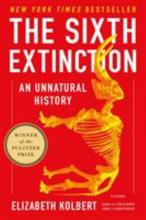
Over the last half-billion years, there have been five mass extinctions, when the diversity of life on earth suddenly and dramatically contracted. Scientists around the world are currently monitoring the sixth extinction, predicted to be the most devastating extinction event since the asteroid impact that wiped out the dinosaurs. This time around, the cataclysm is us.

A provocative look at both the science and lived experience of social contagion. In 2009, tragedy struck the town of Palo Alto: A student from the local high school had died by suicide by stepping in front of an oncoming train. Grief-stricken, the community mourned what they thought was an isolated loss. Until, a few weeks later, it happened again. And again. And again. In six months, the high school lost five students to suicide at those train tracks. A recent transplant to the community and a new father himself, Lee Daniel Kravetz's experience as a science journalist kicked in: what was causing this tragedy? More important, how was it possible that a suicide cluster could develop in a community of concerned, aware, hyper-vigilant adults? The answer? Social contagion. We all know that ideas, emotions, and actions are communicable -- from mirroring someone's posture to mimicking their speech patterns, we are all driven by unconscious motivations triggered by our environment. But when just the right physiological, psychological, and social factors come together, we get what Kravetz calls a "strange contagion:" a perfect storm of highly common social viruses that, combined, form a highly volatile condition. Strange Contagion is simultaneously a moving account of one community's tragedy and a rigorous investigation of social phenomenon, as Kravetz draws on research and insights from experts worldwide to unlock the mystery of how ideas spread, why they take hold, and offer thoughts on our responsibility to one another as citizens of a globally and perpetually connected world.
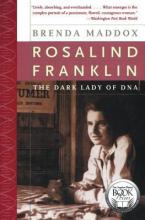
In 1962, Maurice Wilkins, Francis Crick, and James Watson received the Nobel Prize, but it was Rosalind Franklin's data and photographs of DNA that led to their discovery. Brenda Maddox tells a powerful story of a remarkably single-minded, forthright, and tempestuous young woman who, at the age of fifteen, decided she was going to be a scientist, but who was airbrushed out of the greatest scientific discovery of the twentieth century.

The author shows how a new generation of researchers equipped with novel scientific techniques have come to previously unheard of conclusions about the Americas before the arrival of the Europeans: In 1491 there were probably more people living in the Americas than in Europe. Certain cities such as Tenochtitlan, the Aztec capital, were greater in population than any European city. Tenochtitlan, unlike any capital in Europe at that time, had running water, beautiful botanical gardens, and immaculately clean streets. The earliest cities in the Western Hemisphere were thriving before the Egyptians built the great pyramids. Native Americans transformed their land so completely that Europeans arrived in a hemisphere already massively "landscaped" by human beings. Pre-Columbian Indians in Mexico developed corn by a breeding process that the journal Science recently described as "man's first, and perhaps the greatest, feat of genetic engineering.

Yellowstone National Park was once home to an abundance of wild wolves--but park rangers killed the last of their kind in the 1920s. Decades later, the rangers brought them back, with the first wolves arriving from Canada in 1995. This is the incredible true story of one of those wolves. Wolf 8 struggles at first--he is smaller than the other pups, and often bullied--but soon he bonds with an alpha female whose mate was shot. An unusually young alpha male, barely a teenager in human years, Wolf 8 rises to the occasion, hunting skillfully, and even defending his family from the wolf who killed his father. But soon he faces a new opponent: his adopted son, who mates with a violent alpha female. Can Wolf 8 protect his valley without harming his protégé? Authored by a renowned wolf researcher and gifted storyteller, The Rise of Wolf 8 marks the beginning of an original and bold new trilogy, which will transform our view of wolves forever.
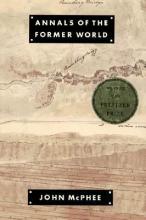
Twenty years ago, when John McPhee began his journeys back and forth across the United States, he planned to describe a cross-section of North America at about the fortieth parallel and, in the process, come to an understanding not only of the science but of the style of the geologists he traveled with.

The fearless memoir of a young forensic pathologist's "rookie season" as a NYC medical examiner, and the cases--hair-raising and heartbreaking and impossibly complex--that shaped her as both a physician and a mother. Just two months before the September 11 terrorist attacks, Dr. Judy Melinek began her training as a New York City forensic pathologist. With her husband T.J. and their toddler Daniel holding down the home front, Judy threw herself into the fascinating world of death investigation--performing autopsies, investigating death scenes, counseling grieving relatives. Working Stiff chronicles Judy's two years of training, taking readers behind the police tape of some of the most harrowing deaths in the Big Apple, including a firsthand account of the events of September 11, the subsequent anthrax bio-terrorism attack, and the disastrous crash of American Airlines flight 587. Lively, action-packed, and loaded with mordant wit, Working Stiff offers a firsthand account of daily life in one of America's most arduous professions, and the unexpected challenges of shuttling between the domains of the living and the dead. The body never lies--and through the murders, accidents, and suicides that land on her table, Dr. Melinek lays bare the truth behind the glamorized depictions of autopsy work on shows like CSI and Law & Order to reveal the secret story of the real morgue.
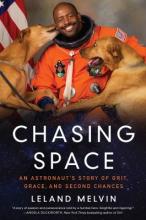
A memoir by the former NASA astronaut and NFL wide receiver traces his personal journey from the gridiron to the stars, examining the intersecting roles of community, perseverance, and grace that create opportunities for success.

Why is glass see-through? What makes elastic stretchy? Why does a paperclip bend? Why does any material look and behave the way it does?With clarity and humor, world-leading materials scientist Mark Miodownik answers all the questions you've ever had about your pens, spoons, and razor blades, while also introducing a whole world full of materials you've never even heard of: the diamond five times the size of Earth; concrete cloth that can be molded into any shape; and graphene, the thinnest, strongest, stiffest material in existence--only a single atom thick.Stuff Matters tells enthralling stories that explain the science and history of materials. From the teacup to the jet engine, the silicon chip to the paper clip, the plastic in our appliances to the elastic in our underpants, Miodownik reveals the miracles of engineering that permeate our lives. As engaging as it is incisive, Stuff Matters will make you see the materials that surround you with new eyes.

Sy Montgomery explores the emotional and physical world of the octopus--a surprisingly complex, intelligent, and spirited creature--and the remarkable connections it makes with humans. Sy Montgomery's popular 2011 Orion magazine piece, "Deep Intellect," about her friendship with a sensitive, sweet-natured octopus named Athena and the grief she felt at her death, went viral, indicating the widespread fascination with these mysterious, almost alien-like creatures. Since then Sy has practiced true immersion journalism, from New England aquarium tanks to the reefs of French Polynesia and the Gulf of Mexico, pursuing these wild, solitary shape-shifters. Octopuses have varied personalities and intelligence they show in myriad ways: endless trickery to escape enclosures and get food; jetting water playfully to bounce objects like balls; and evading caretakers by using a scoop net as a trampoline and running around the floor on eight arms. But with a beak like a parrot, venom like a snake, and a tongue covered with teeth, how can such a being know anything? And what sort of thoughts could it think? The intelligence of dogs, birds, and chimpanzees was only recently accepted by scientists, who now are establishing the intelligence of the octopus, watching them solve problems and deciphering the meaning of their color-changing camouflage techniques. Montgomery chronicles this growing appreciation of the octopus, but also tells a love story. By turns funny, entertaining, touching, and profound, The Soul of an Octopus reveals what octopuses can teach us about consciousness and the meeting of two very different minds.
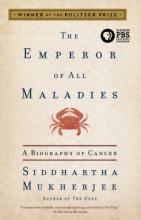
The Emperor of All Maladies is a magnificent, profoundly humane “biography” of cancer - from its first documented appearances thousands of years ago through the epic battles in the twentieth century to cure, control, and conquer it to a radical new understanding of its essence.

This is an epic, moving history of a scientific idea coming to life, by the author of The Emperor of All Maladies. But woven through The Gene, like a red line, is also an intimate history – the story of Mukherjee’s own family and its recurring pattern of mental illness, reminding us that genetics is vitally relevant to everyday lives. These concerns reverberate even more urgently today as we learn to “read” and “write” the human genome – unleashing the potential to change the fates and identities of our children.
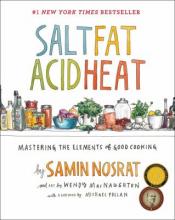
Whether you've never picked up a knife or you're an accomplished chef, there are only four basic factors that determine how good your food will taste. Salt, Fat, Acid, and Heat are the four cardinal directions of cooking, and they will guide you as you choose which ingredients to use and how to cook them, and they will tell you why last minute adjustments will ensure that food tastes exactly as it should. This book will change the way you think about cooking and eating, and help you find your bearings in any kitchen, with any ingredients, while cooking any meal.

It's intimidating to realize that we live in a world overflowing with misinformation, bias, myths, deception, and flawed knowledge. There really are no ultimate authority figures-no one has the secret and there is no place to look up the definitive answers to our questions (not even Google). But, by thinking skeptically and logically, we can combat sloppy reasoning, bad arguments and superstitious thinking. It's difficult, and takes a lot of vigilance, but it's worth the effort.

The Colorado River is a crucial resource for a surprisingly large part of the United States, and every gallon that flows down it is owned or claimed by someone. David Owen traces all that water from the Colorado's headwaters to its parched terminus, once a verdant wetland but now a million-acre desert. He takes readers on an adventure downriver, along a labyrinth of waterways, reservoirs, power plants, farms, fracking sites, ghost towns, and RV parks, to the spot near the U.S.Mexico border where the river runs dry. Water problems in the western United States can seem tantalizingly easy to solve: just turn off the fountains at the Bellagio, stop selling hay to China, ban golf, cut down the almond trees, and kill all the lawyers. But a closer look reveals a vast man-made ecosystem that is far more complex and more interesting than the headlines let on.

Farming While Black is the first comprehensive "how to" guide for aspiring African-heritage growers to reclaim their dignity as agriculturists and for all farmers to understand the distinct, technical contributions of African-heritage people to sustainable agriculture. At Soul Fire Farm, author Leah Penniman co-created the Black and Latinx Farmers Immersion (BLFI) program as a container for new farmers to share growing skills in a culturally relevant and supportive environment led by people of color. Farming While Black organizes and expands upon the curriculum of the BLFI to provide readers with a concise guide to all aspects of small-scale farming, from business planning to preserving the harvest. Throughout the chapters Penniman uplifts the wisdom of the African diasporic farmers and activists whose work informs the techniques described--from whole farm planning, soil fertility, seed selection, and agroecology, to using whole foods in culturally appropriate recipes, sharing stories of ancestors, and tools for healing from the trauma associated with slavery and economic exploitation on the land. Woven throughout the book is the story of Soul Fire Farm, a national leader in the food justice movement.

\When Michael Pollan set out to research how LSD and psilocybin (the active ingredient in magic mushrooms) are being used to provide relief to people suffering from difficult-to-treat conditions such as depression, addiction and anxiety, he did not intend to write what is undoubtedly his most personal book. But upon discovering how these remarkable substances are improving the lives not only of the mentally ill but also of healthy people coming to grips with the challenges of everyday life, he decided to explore the landscape of the mind in the first person as well as the third. Thus began a singular adventure into the experience of various altered states of consciousness, along with a dive deep into both the latest brain science and the thriving underground community of psychedelic therapists.

The battles over evolution, climate change, childhood vaccinations, and the causes of AIDS, alternative medicine, oil shortages, population growth, and the place of science in our country--all are reaching a fevered pitch. Many people and institutions have exerted enormous efforts to misrepresent or flatly deny demonstrable scientific reality to protect their nonscientific ideology, their power, or their bottom line. To shed light on this darkness, Donald R. Prothero explains the scientific process and why society has come to rely on science not only to provide a better life but also to reach verifiable truths no other method can obtain.

Examines the emergence and causes of new diseases all over the world, describing a process called "spillover" where illness originates in wild animals before being passed to humans and discusses the potential for the next huge pandemic. The author illuminates the dynamics of Ebola, SARS, bird flu, Lyme disease, and other emerging threats and tells the story of AIDS and its origins as it has never before been told.

In Bonk, the best-selling author of Stiff turns her outrageous curiosity and insight on the most alluring scientific subject of all: sex. Can a person think herself to orgasm? Why doesn't Viagra help women-or, for that matter, pandas? Can a dead man get an erection? Is vaginal orgasm a myth? Mary Roach shows us how and why sexual arousal and orgasm-two of the most complex, delightful, and amazing scientific phenomena on earth-can be so hard to achieve and what science is doing to make the bedroom a more satisfying place.

Holding her first grandchild in her arms in 2003, Mary Robinson was struck by the uncertainty of the world he had been born into. Before his fiftieth birthday, he would share the planet with more than nine billion people--people battling for food, water, and shelter in an increasingly volatile climate. The faceless, shadowy menace of climate change had become, in an instant, deeply personal. Mary Robinson's mission would lead her all over the world, from Malawi to Mongolia, and to a heartening revelation: that an irrepressible driving force in the battle for climate justice could be found at the grassroots level, mainly among women, many of them mothers and grandmothers like herself. From Sharon Hanshaw, the Mississippi matriarch whose campaign began in her East Biloxi hair salon and culminated in her speaking at the United Nations, to Constance Okollet, a small farmer who transformed the fortunes of her ailing community in rural Uganda, Robinson met with ordinary people whose resilience and ingenuity had already unlocked extraordinary change. Powerful and deeply humane, Climate Justice is a stirring manifesto on one of the most pressing humanitarian issues of our time, and a lucid, affirmative, and well-argued case for hope.

This is a story about you. It is the history of who you are and how you came to be. It is unique to you, as it is to each of the 100 billion modern humans who have ever drawn breath. But it is also our collective story, because in every one of our genomes we each carry the history of our species births, deaths, disease, war, famine, migration, and a lot of sex.

If a man has lost a leg or an eye, he knows he has lost a leg or an eye; but if he has lost a self—himself—he cannot know it, because he is no longer there to know it. Dr. Oliver Sacks recounts the stories of patients struggling to adapt to often bizarre worlds of neurological disorder. Here are people who can no longer recognize everyday objects or those they love; who are stricken with violent tics or shout involuntary obscenities; who have been dismissed as autistic or retarded, yet are gifted with uncanny artistic or mathematical talents. If inconceivably strange, these brilliant tales illuminate what it means to be human.

Are we on the brink of a new Dark Age of irrationality and superstition? In this stirring, brilliantly argued book, internationally respected scientist Carl Sagan shows how scientific thinking is necessary to safeguard our democratic institutions and our technical civilization." "The Demon-Haunted World is more personal and richer in moving and revealing human stories than anything Sagan has previously written. With illustrations from his own childhood experience as well as engrossing tales of discovery, Sagan shows how the method of scientific thought can cut through prejudice and hysteria to uncover the often surprising truth." "He convincingly debunks "alien abduction," "channelers," faith-healer fraud, the "face" on Mars, and much else. Along the way, he refutes the arguments that science destroys spirituality or is just another arbitrary belief system, asks why scientific study is often stigmatized, discusses the dangers of the misuse of science, and provides a "baloney detection kit" for thinking through political, social, religious, and other issues.

Explores the concept of race, past and present. She examines the dark roots of race research and how race has again crept gently back into science and medicine. And she investigates the people who use this research for their own political purposes, including white supremacists. They believe that populations are born different, in character and intellectually, and that this defines the success or failure of nations. It is a worldwide network of eugenicists with their own journals and sources of funding, providing the kind of shoddy studies that were ultimately cited in Richard Hernstein's and Charles Murray's 1994 title, The Bell Curve, which purported to show differences in intelligence among races. Taking us from Darwin through the civil rights movement to modern-day ancestry testing, Saini examines how deeply our present is influenced by our past, and the role that politics has so often had to play in our understanding of race.

"You look like a thing and I love you" is one of the best pickup lines ever... according to an artificial intelligence trained by scientist Janelle Shane, creator of the popular blog AI Weirdness. She creates silly AIs that learn how to name paint colors, create the best recipes, and even flirt (badly) with humans--all to understand the technology that governs so much of our daily lives. We rely on AI every day for recommendations, for translations, and to put cat ears on our selfie videos. We also trust AI with matters of life and death, on the road and in our hospitals. But how smart is AI really... and how does it solve problems, understand humans, and even drive self-driving cars? Shane delivers the answers to every AI question you've ever asked, and some you definitely haven't. Like, how can a computer design the perfect sandwich? What does robot-generated Harry Potter fan-fiction look like? And is the world's best Halloween costume really "Vampire Hog Bride"? In this smart, often hilarious introduction to the most interesting science of our time, Shane shows how these programs learn, fail, and adapt--and how they reflect the best and worst of humanity. You Look Like a Thing and I Love You is the perfect book for anyone curious about what the robots in our lives are thinking.

Before John Glenn orbited the earth or Neil Armstrong walked on the moon, a group of dedicated female mathematicians known as "human computers" used pencils, slide rules and adding machines to calculate the numbers that would launch rockets, and astronauts, into space. Among these problem-solvers were a group of exceptionally talented African American women, some of the brightest minds of their generation. Originally relegated to teaching math in the South's segregated public schools, they were called into service during the labor shortages of World War II, when America's aeronautics industry was in dire need of anyone who had the right stuff. Suddenly, these overlooked math whizzes had a shot at jobs worthy of their skills, and they answered Uncle Sam's call, moving to Hampton Virginia and the fascinating, high-energy world of the Langley Memorial Aeronautical Laboratory. Even as Virginia's Jim Crow laws required them to be segregated from their white counterparts, the women of Langley's all-black "West Computing" group helped America achieve one of the things it desired most: a decisive victory over the Soviet Union in the Cold War, and complete domination of the heavens.

Her name was Henrietta Lacks, but scientists know her as HeLa. She was a poor Southern tobacco farmer, yet her cells--taken without her knowledge--became one of the most important tools in medicine. The first "immortal" human cells grown in culture, they are still alive today, though she has been dead for more than sixty years. HeLa cells were vital for developing the polio vaccine; uncovered secrets of cancer and viruses; helped lead to in vitro fertilization, cloning, and gene mapping; and have been bought and sold by the billions. Yet Henrietta Lacks is buried in an unmarked grave. Her family did not learn of her "immortality" until more than twenty years after her death, when scientists began using her husband and children in research without informed consent. The story of the Lacks family is inextricably connected to the dark history of experimentation on African Americans, the birth of bioethics, and the legal battles over whether we control the stuff we are made of.

Describes the forty-year effort of John Harrison to invent the chronometer, the first instrument able to keep accurate time for navigational purposes.
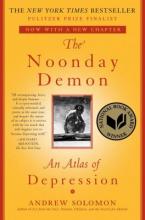
The author offers a look at depression in which he draws on his own battle with the illness and interviews with fellow sufferers, researchers, doctors, and others to assess the complexities of the disease, its causes and symptoms, and available therapies. This book examines depression in personal, cultural, and scientific terms. He confronts the challenge of defining the illness and describes the vast range of available medications, the efficacy of alternative treatments, and the impact the malady has on various demographic populations, around the world and throughout history. He also explores the thorny patch of moral and ethical questions posed by emerging biological explanations for mental illness. He takes readers on a journey into the most pervasive of family secrets and contributes to our understanding not only of mental illness but also of the human condition.

In 2015, a flood of thick yellow sludge from a long-abandoned mine in Silverton, Colorado, made headlines as it flowed down the Animas River towards the Navajo Nation and the mighty Colorado River. Perhaps the most charismatic environmental disaster of our time, the Gold King Mine spill illustrates the devastating potential waiting in hundreds of abandoned mines throughout the Rocky Mountains. With disarming storytelling, award-winning journalist Jonathan P. Thompson unearths a litany of impacts wrought by a century and a half of mining, energy development, and fracking in southwestern Colorado. Amid these harsh realities, Thompson explores how a new generation is setting out to make amends.

The essential universe, from our most celebrated and beloved astrophysicist. What is the nature of space and time? How do we fit within the universe? How does the universe fit within us? There's no better guide through these mind-expanding questions than acclaimed astrophysicist and best-selling author Neil deGrasse Tyson. But today, few of us have time to contemplate the cosmos. So Tyson brings the universe down to Earth succinctly and clearly, with sparkling wit, in tasty chapters consumable anytime and anywhere in your busy day. While you wait for your morning coffee to brew, for the bus, the train, or a plane to arrive, Astrophysics for People in a Hurry will reveal just what you need to be fluent and ready for the next cosmic headlines: from the Big Bang to black holes, from quarks to quantum mechanics, and from the search for planets to the search for life in the universe.

What separates your mind from an animal’s? Maybe you think it’s your ability to design tools, your sense of self, or your grasp of past and future—all traits that have helped us define ourselves as the planet’s preeminent species. But in recent decades, these claims have eroded, or even been disproven outright, by a revolution in the study of animal cognition. Take the way octopuses use coconut shells as tools; elephants that classify humans by age, gender, and language; or Ayumu, the young male chimpanzee at Kyoto University whose flash memory puts that of humans to shame. Based on research involving crows, dolphins, parrots, sheep, wasps, bats, whales, and of course chimpanzees and bonobos, Frans de Waal explores both the scope and the depth of animal intelligence. He offers a firsthand account of how science has stood traditional behaviorism on its head by revealing how smart animals really are, and how we’ve underestimated their abilities for too long.

There have been many books about Antarctica in the past, but all have focused on only one aspect of the continent - its science, its wildlife, the heroic age of exploration, personal experiences or the sheer awesome beauty of the landscape, for example - but none has managed to capture whole story, till now. Gabrielle Walker, author, consultant to New Scientist and regular broadcaster with the BBC has written a book unlike any that has ever been written about the continent. Antarctica weaves all the significant threads into an intricate tapestry, made up of science, natural history, poetry, epic history, what it feels like to be there and why it draws so many different kinds of people back there again and again.
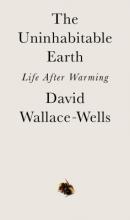
It is worse, much worse, than you think. If your anxiety about global warming is dominated by fears of sea-level rise, you are barely scratching the surface of what terrors are possible. In California, wildfires now rage year-round, destroying thousands of homes. Across the US, "500-year" storms pummel communities month after month, and floods displace tens of millions annually. This is only a preview of the changes to come. And they are coming fast. Without a revolution in how billions of humans conduct their lives, parts of the Earth could become close to uninhabitable, and other parts horrifically inhospitable, as soon as the end of this century. In his travelogue of our near future, David Wallace-Wells brings into stark relief the climate troubles that await--food shortages, refugee emergencies, and other crises that will reshape the globe. But the world will be remade by warming in more profound ways as well, transforming our politics, our culture, our relationship to technology, and our sense of history. It will be all-encompassing, shaping and distorting nearly every aspect of human life as it is lived today. Like An Inconvenient Truth and Silent Spring before it, The Uninhabitable Earth is both a meditation on the devastation we have brought upon ourselves and an impassioned call to action. For just as the world was brought to the brink of catastrophe within the span of a lifetime, the responsibility to avoid it now belongs to a single generation.

A study of what would happen to Earth if the human presence was removed examines our legacy for the planet, from the objects that would vanish without human intervention to those that would become long-lasting remnants of humankind.

An investigation into the restorative benefits of nature draws on cutting-edge research and the author's explorations with international nature therapy programs to examine the relationship between nature and human cognition, mood, and creativity. --Publisher

This book lets us peer into the world of microbes -- not as germs to be eradicated, but as invaluable parts of our lives -- allowing us to see how ubiquitous and vital microbes are: they sculpt our organs, defend us from disease, break down our food, educate our immune systems, guide our behavior, bombard our genomes with their genes, and grant us incredible abilities. While much of the prevailing discussion around the microbiome has focused on its implications for human health, Yong broadens this focus to the entire animal kingdom, prompting us to look at ourselves and our fellow animals in a new light: less as individuals and more as the interconnected, interdependent multitudes we are. I Contain Multitudes is the story of extraordinary partnerships between the familiar creatures of our world and those we never knew existed. It will change both our view of nature and our sense of where we belong in it.